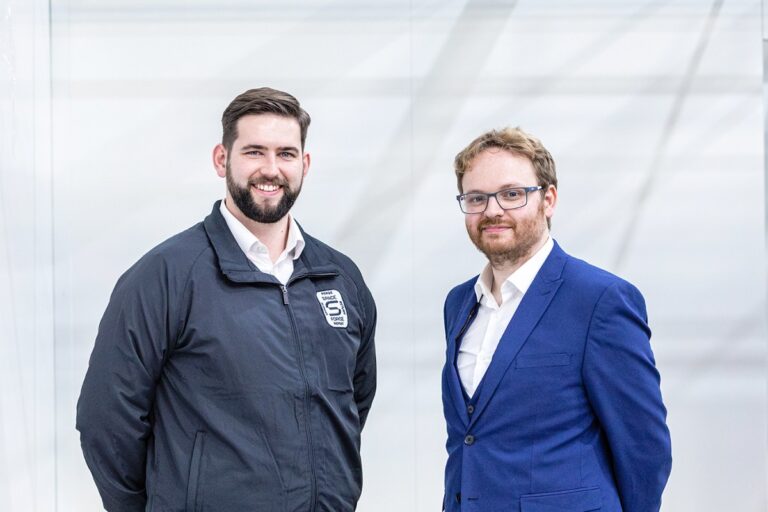From AI to EVS, demand for semiconductors is exploding, but silicon is reaching its limit. To make more efficient chips, it's not much more ubiquitous than sand, but the solution may literally be there.
Space Forge, a British startup based in Cardiff, Wales, recently raised a series of £22.6 million (approximately $30 million) to create wafer materials in the universe where unique conditions unlock new possibilities.
For example, the Welsh startup has won funding for a project that wants to test how BT (formerly British Telecom) can reduce the power consumption of 5G towers by integrating crystal materials grown in space. Due to zero gravity and other properties, there are fewer defects in crystals created in space, which helps the device use less energy.
These real-world use cases convey the message that Space Forge can use its technology as an invisible backbone for critical systems. The whole idea of making chips on orbit may sound science fiction, but its feasibility has been known since the 1970s, CEO Joshua Western told TechCrunch.
“We were on the shoulders of about 50 years of research in knowing that this is possible, but also knowing there is a deep improvement in doing so,” Western said.
The improvements to the problem have acquired fewer defects, improved performance crystals and advanced semiconductor materials, making them attractive for use in applications such as quantum computing and defense systems.
This double use possibility explains why the NATO innovation fund led Space Forge Series A and why Northrop Grumman, the leading US defense contractor, is one of its partners.
Partners are key to Space Forge's trajectory. The company does not build rockets and instead relies on existing space providers, which in Western terms is “solved problems.”
It's not just rockets. From chip manufacturing to space return, Space Forge combines technologies that could be described as resolved issues, at least on paper. But when you ask Western about the moat, he immediately has a retort.
That's the price you pay to take advantage of the unique environment of the universe. It needs to be adapted to harsh conditions such as extreme temperatures and microgravity, Western said. “Physics has the answer, and engineering is the way to actually get there.”
“Mary Poppins from Space”
Engineering is also needed to bridge the gap between innovation and commercially viable technologies. Rather than capsules like Apollo, Space Forge returns the material back to Earth as “Mary Poppins from Space.” Western explained the nickname: “We unfold what looks like an umbrella (but) it is space grade, and that allows us to return from space to the ground.”
Development of new return technologies is a key focus for Space Forge. In addition to the heat shield, Pridwen, who nods to King Arthur's legend, has also developed Fielder, a floating net that allows him to catch satellites again to ensure a soft landing in the water. These efforts were supported by the British Space Agency and the European Space Agency.
Establishing return infrastructure across Europe is one of Space Forge's ambitions and is ongoing. This week, the company opened an office in Santa Maria, in Portugal, in the Azores. This is a suitable location for satellite returns in mainland Europe and is an important step to convince European partners that this approach can reach industrial scale.
The increased commoditization of both return and launch technologies has first enabled the rise of manufacturing startups within the space. Applications include drug discovery and telecom hardware. But their viability remains highly dependent on finding clients who are willing to pay that premium, or who are still willing to pay the cost.
Changing geopolitics will help spaces to secure more of these clients. Western and his co-founder, CTO Andrew Bacon previously worked at Thales Alenia Space, a joint venture between Thales and his Italian colleague Leonardo. However, this trend is wider than mere defense, as concerns are growing across Europe than Taiwan's dependence on semiconductors.
“We urgently need a resilient, homemade supply of the next generation of supermaterials needed for the future of computing, and we also need to produce this homemade chip supply sustainably.”
The Climate Tech VC company, which co-led Space Forge seeds to be jointly led Series A, is purchasing Space Forge positioning as a “carbon negative technology” that could fight climate change. However, emission savings have not yet been proven on scale and rely on commercial adoption to truly offset each mission.
However, Space Forge still needs to complete the first mission. That first attempt ended in 2023 after a total of six and a half minutes, when Virgin Orbit rocket suffered extraordinarily with the Cornwall launch, losing the entire payload, including the Space Forge's Fortestar-0 satellite.
With new funding, the company is now accelerating the development of its latest spacecraft, preparing to launch a Forgestar-1 demonstrator with Pridwen later this year. Then, nodding to the faraway Galaxy, Space Forge announced the mission's official name, “The Forge Awakens.”
Anna Heim met and interviewed Joshua Western and Dahlia Sahalova at the World Fund event where the VC company covers her travel expenses. This article was written independently.

